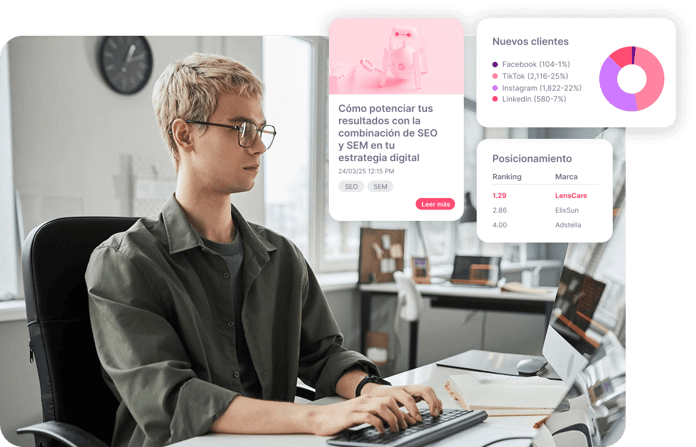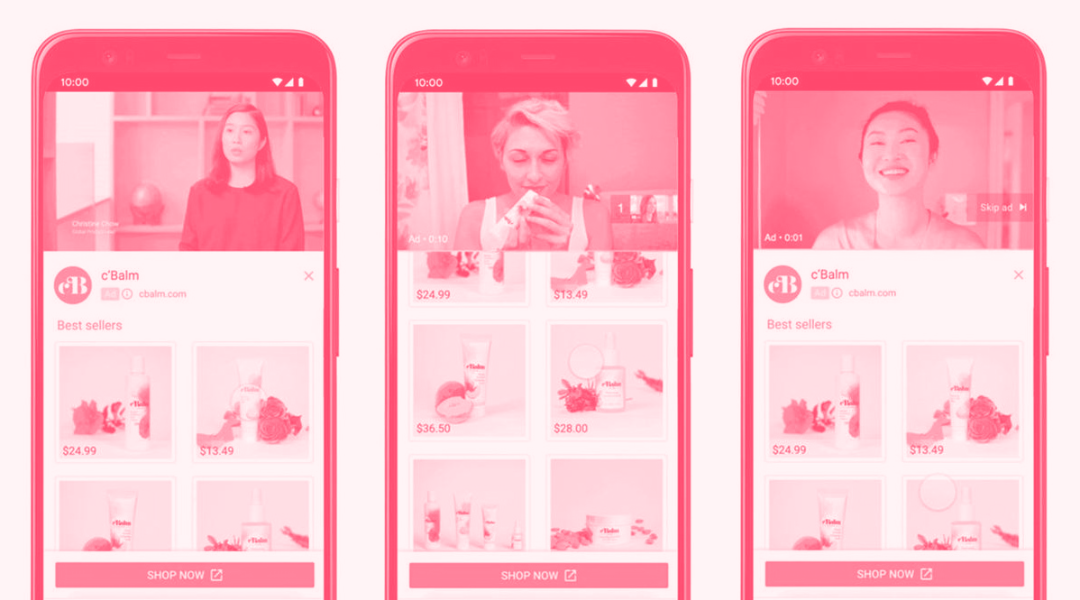What are YouTube Ads and how to use them?
When we think of YouTube Ads, many still box it in as “that thing that pops up before your recipe video or the latest podcast episode”. But the truth...
Plan, activate and control media to hit targets with precision.
Turn data into smart decisions with advanced analytics and modeling.
Efficiency, governance and scale for agencies and teams.
![[Ebook] SEO + AI: eBook to Master AI Overviews and GEO](https://www.adsmurai.com/hubfs/MKT%20-%202025/WEB/Resources%20-%20Banners/HeaderEN_Ebook_SEO+AI.png)
[Ebook] SEO + AI: eBook to Master AI Overviews and GEO
Learn how to structure and distribute your content so generative models can understand it, trust it, and reuse it in their answers. A practical guide to compete and appear in AI Overviews and AI-powered assistants.
Discover moreDoes your brand even exist if AI doesn't mention it?
For years, we’ve been fine-tuning our content strategies to please Google. SEO on point, keywords in all the right places, blog posts your grandma could understand. But there’s something no one’s telling you (and it’s a total game-changer):
Brands are no longer just competing to rank on Google. They’re competing to be mentioned by AI.
The problem? Most content strategies aren’t ready for that.
And while you’re busy writing a post like “5 tips to care for your skin,” AI is out there recommending your competitors when someone asks:
“What skincare brands do dermatologists recommend?”
Welcome to the new branding battleground: the conversation with generative AI.
Share of Voice: it’s not how much you invest, it’s how often you’re mentioned
Your team has the perfect plan.
Always-on campaigns across Meta and Google, influencer collabs, a polished content strategy, in-store activations, and a media mix any planner would envy.
But then comes a simple question: “What brands do you recommend for…?”
And they don’t ask Google.
They ask ChatGPT.
Or Gemini.
Or Claude.
Or a voice assistant powered by AI.
And your brand isn’t in the answer.
This is the new competitive landscape: decisions are made based on what AIs understand, prioritize, and recommend. And what doesn’t get mentioned… simply doesn’t exist.
And this has a direct impact on your brand awareness, consideration, and sales.
Share of Voice (SOV) has always been a key metric to understand your brand’s weight in the market. Traditionally, it was measured by ad spend: impressions, GRPs, budget share…
But in the age of conversational AI, SOV isn’t just about paid media anymore. Now, it also depends on how often your brand is mentioned when someone asks an AI a question.
“What are the most effective skincare brands?”
“Which running shoes are best for beginners?”
“Which bank has the best mobile app?”
These questions come with a single answer. Not a list of links. Not a page full of ads. Just one paragraph, one brand, one recommendation—based on what the AI has learned.
If your brand isn’t in that answer, your real Share of Voice in the most influential channel today is essentially zero. No matter how much you’re investing elsewhere.
Your brand team might repeat that you’re innovative, sustainable, and premium.
But if someone asks ChatGPT about “sustainable fashion brands” and your name isn’t there—while your competitors are—you’ve got a problem.
Brand positioning is the space you occupy in the mind of the consumer. In the era of AI, that space also includes how AIs describe you, classify you, and group you with others.
Are you associated with “affordable luxury” or “basic and functional”?
With “cutting-edge innovation” or “cheap and cheerful”?
And it’s not anecdotal—what AI “says” about your brand reflects every signal it’s absorbed: your content, your SEO, your PR, your campaigns, your community… it all leaves a footprint.
![]()
We’ve all fallen into the content-for-content’s-sake trap.
You publish blog articles, guides, YouTube videos, LinkedIn posts… but are they actually building authority? Are they improving your visibility in AI?
Spoiler: not always.
AIs don’t feed on pretty visuals or classic SEO tricks. They need structure, clear intent, natural language, and content that answers real questions.
If your content doesn’t answer what people are asking, the AI won’t take it into account. That’s it. That’s the rule.
And if your competitors do it better… the AI will recommend them instead.
At Adsmurai, when we talk about GEO, we mean activating, adapting, and optimizing campaigns based on local nuances: language, culture, digital behavior, preferred platforms, etc. In short, turning strategy into local relevance.
But there’s a crucial step that many brands are skipping:
Where are you really visible in today's discovery channels like generative AI?
You might have local campaigns, influencers in five countries, and perfect translations… but if AI isn’t mentioning you when someone in Italy, Colombia, or Germany asks about your category, something’s off.
This is where GEO meets brand positioning:

Everything we've discussed above has one thing in common: your brand needs real visibility on the new discovery channels .
And that's where Brand Tracker comes in , our solution that gives you a 360º view of how your brand (and your competitors) appear in generative AI responses like ChatGPT, Gemini, or Claude.
Because consumers no longer ask just Google. They ask systems that don't show links , only answers.
And being there or not being there… makes the difference between entering the decision-making process or being left out .

When we think of YouTube Ads, many still box it in as “that thing that pops up before your recipe video or the latest podcast episode”. But the truth...

1 min read
Optimizing your ads on Meta is like trying to find the best coffee shop in your city: it can be a challenge, but it's worth it. This will bring "huge...

YouTube is a success for creators and brands in developing their own content creation. Users use the platform to connect with their favourite...